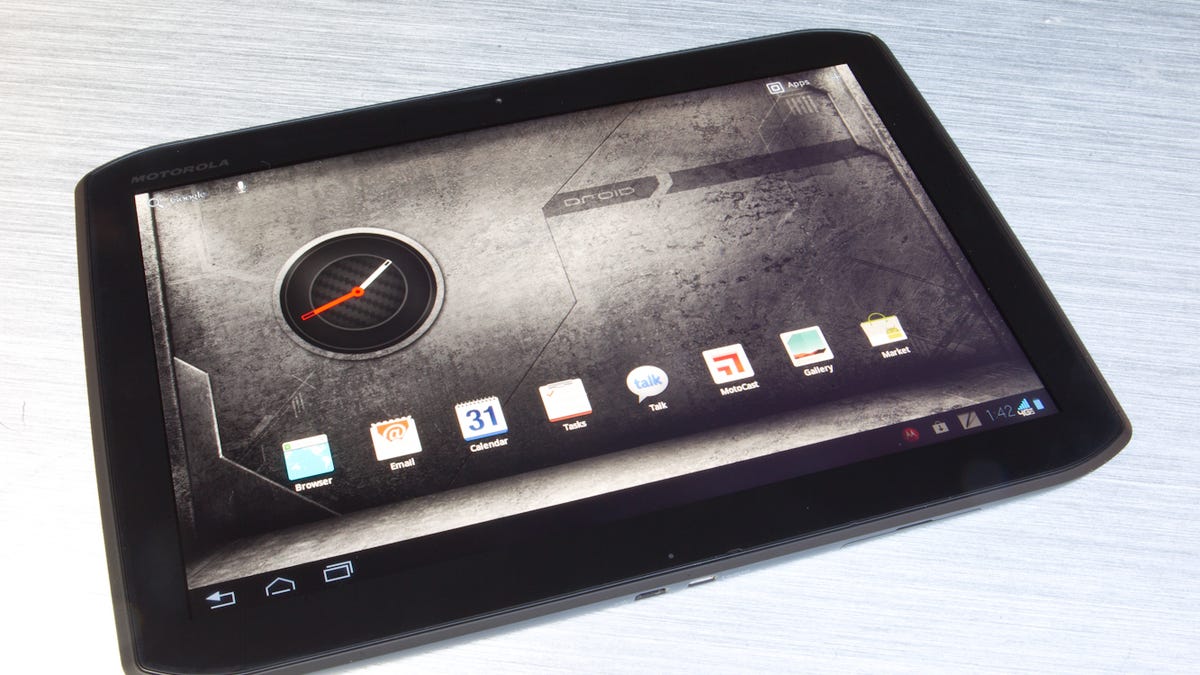'Xoom 2' is no iPad 2--and that can also be a good thing
The Motorola Xyboard tablet from Verizon isn't perfect, but it has some serious upsides--and a few that this author finds really like.

Though the Android-based Motorola Xyboard tablet from Verizon has taken its lumps from reviewers, my initial take is a bit more upbeat.
So, let's get the bad news out of the way first. CNET Reviews didn't like the price (among other things) for this follow-on to the original Xoom tablet.
I agree. If you opt for a month-to-month broadband connection for a 10-inch 16GB Xyboard, you have to pay $699 plus the first month ($30 for 2GB). That's about $730 just to walk out of the store--and about $100 more than the initial outlay for the 16GB 3G iPad 2. And, as I found out, you have to pay a small reconnection fee if you suspend service. That's a pretty unusual--and brazen--definition of month-to-month.
And that makes the Xyboard/Xoom 2 an extremely tough (impossible?) sell against the iPad. In short, in the eyes of most consumers, the Xyboard hardly has the cachet of the iPad. So, why in the world pay more?
That downside is serious enough to almost obviate any need to talk about its upside. But not quite.
I've been using a Xyboard for about two weeks. And, the above discussion aside, I have to say I like it.
4G/LTE: Big thumbs-up for me. I have been traveling on both coasts over the past few weeks, and 4G/LTE has been available wherever I've been (Los Angeles and suburban Philadelphia).
In a word, it's fast. That means between 15MBps and 20MBps down and 5MBps up in most cases. Web pages pop, and navigating with Maps using layers on a 4G connection is doubly good. Because of inherent Android issues, scrolling is not always as smooth as the iPad, but media-rich Web pages can load more quickly compared to a 3G iPad.
If mobile broadband is important, the Xyboard/Xoom 2 trumps the iPad 2's 3G, big time.
Voice recognition/navigation: Voice navigation is built into the Xyboard/Xoom 2. And it gives the iPhone 4S' Siri plenty of competition (I also use Siri). Just tap on the Xyboard's microphone, then ask questions about directions, local restaurants, weather, a word definition, whatever. The Xyboard responds just as fast as Siri.
Because voice recognition is not built into the iPad 2, for me, this is another win for the Xyboard.
Flash: This is less important than it was a year ago but it is still helpful to have Adobe's Flash. Here's a good example. Many local businesses that built their Web sites around Flash years ago haven't updated since. Want to get full access to the site (as I did)? No Flash, no dice. And, needless to say, there are plenty of up-to-date sites that still rely on Flash. The iPad 2 does not have native support for Flash.
Stylus input: This is built-in too. Though I don't use it, it's nice to know it's there. I know people who need stylus on a tablet--and preferably out of the box. And the Xyboard comes with MyScript Stylus software, allowing you to convert handwriting to text.
Battery life: Though not an outstanding feature, the Xyboard certainly has decent battery life. Based on my daily usage, I typically get at least a couple days before recharging.
Build: I like the XyBoard's build a lot. It's plenty thin at 0.35 inch, and it's got the weight-balance thing down nicely, so the 10-inch design feels very light at 0.85 pound.
Screen: I don't notice any appreciable difference in day-to-day use from the iPad 2. Basically, a draw.
A couple footnotes. First, Android 3.2 still has some rough spots--that is, features that don't seem to be cleanly implemented. But I'm pretty confident that things will improve significantly with Ice Cream Sandwich. So, I see this shortcoming as short-lived.
Second, the usage scenarios above are highly individualistic. Others may focus on entirely different aspects of the tablet experience than those presented above and judge the value of a product accordingly.

